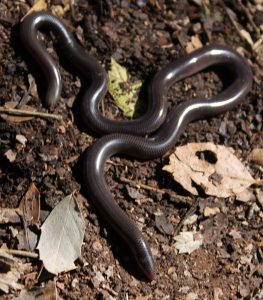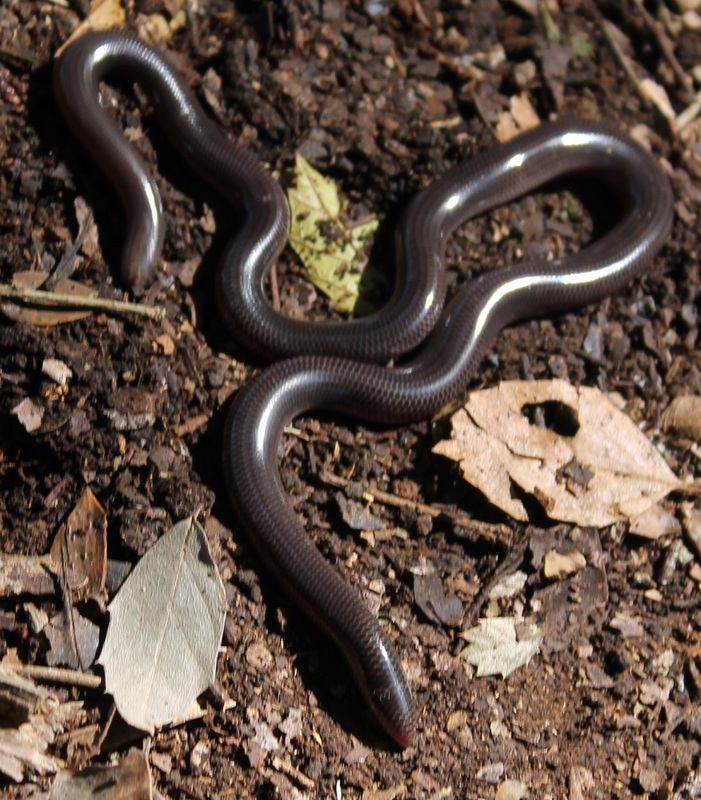The Origins of Leglessness: New Fossils and New Perspectives
 Among paleobiologists, the origin of leglessness in snakes is still a subject of debate. As mentioned in our previous series of discussions on snake evolution, there are two opposing camps of the argument; leglessness as an adaptation to aquatic environments, or for terrestrial burrowing purposes. Various attempts to fully resolve this mystery have delivered supporting data for both hypotheses, but nothing conclusive.
Among paleobiologists, the origin of leglessness in snakes is still a subject of debate. As mentioned in our previous series of discussions on snake evolution, there are two opposing camps of the argument; leglessness as an adaptation to aquatic environments, or for terrestrial burrowing purposes. Various attempts to fully resolve this mystery have delivered supporting data for both hypotheses, but nothing conclusive.
Until recently, I like many others subscribed to the aquatic origin hypothesis, however new evidence has emerged supporting terrestrial, small-limbed ancestral reptiles losing their legs to aid in burrowing. Such an ancestor may have been very similar to the Tetrapodophis amplectus, a recently discovered fossil snake in Brazil. While many early snake fossils have hind legs, T. amplectus has both hind and forelegs, and is remarkably similar to the modern Serpentes. Furthermore, it has no features specifically for aquatic life, such as a paddle tail, while features like the lowered neural spines and the skull and body proportions indicate a fossorial (burrowing) lifestyle. Read more at the links below.
Martill et al. 2015. A four-legged snake from the Early Cretaceous of Gondwana. 349 (6246)
BBC News. Jul 24. 2015. Science & Environment. Four legged Snake Ancestor ‘Dug Burrows’
As if this wasn’t enough, a recent fossil study of reptilian inner ear bones has further supported the hypothesis of terrestrial burrowing origin. This fascinating study by Hongyu Yi and Mark Norell focused on Dinilysia patagonica, a terrestrial-burrowing stem-snake closely related to the origin of modern snakes. Using x-ray computed tomography (CT), they built three-dimensional models of the bony inner ear labyrinth and brain case, features that are preserved as fossils more readily than more external features, such as vertebrae. They proceeded to analyse landmark features in the inner ear vestibule and canal in D. patagonica and compared these to CT scans of 43 living snakes, including terrestrial burrowers, aquatic snakes, and habitat generalists.
The comparison revealed that all burrowing snakes have similar inner ear structure. To quote the authors, “D. patagonica shares with modern burrowing squamates a large spherical vestibule, large foramen ovale, and slender semicircular canals in the inner ear (Fig. 2, A to C). The vestibule occupies most of the space defined by the three semicircular canals and contacts the lateral semicircular canal in a horizontal plane. Our data show that a spherical vestibule is a morphological signature for burrowing, because it only appears in squamates that actively burrow underground.” Furthermore, no aquatic snakes have been found to possess this kind of spherical vestibule. If indeed this snake is one of the ancestral snakes, it may have had great difficulty hearing underwater compared to its contemporaries. Read more here:
Hongyu Yi & Mark A. Norell. 2015. The burrowing origin of modern snakes.Science Advances,1,10
These results throw further doubt on the marine origin hypothesis for leglessness in snakes. No doubt the debate will still continue for some time, however it seems that the terrestrial origin is steadily gaining ground, while the same cannot be said for the marine. And of course, it will be interesting to see what unsuspected wrenches will be thrown into the works by future paleontological discoveries. Watch this space!
Ciao,
Janne
www.snakeoutbrisbane.com.au
Your Brisbane SnakeOut.


